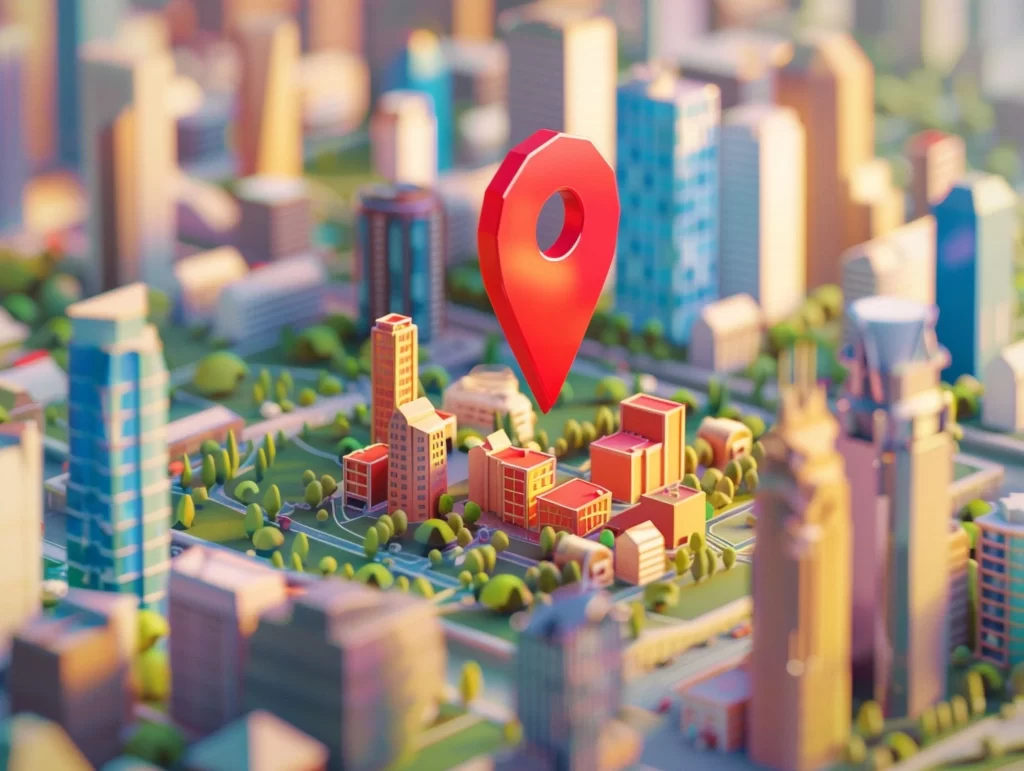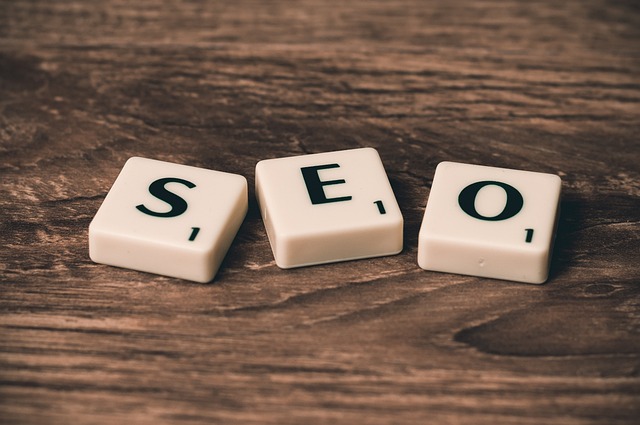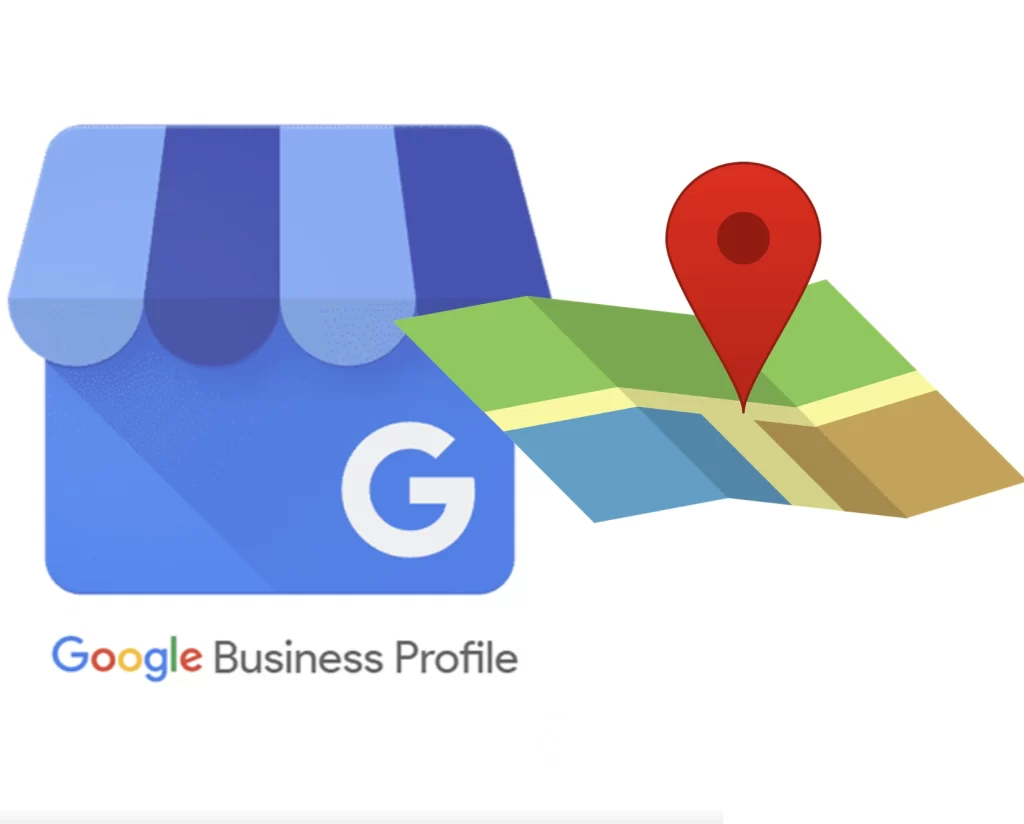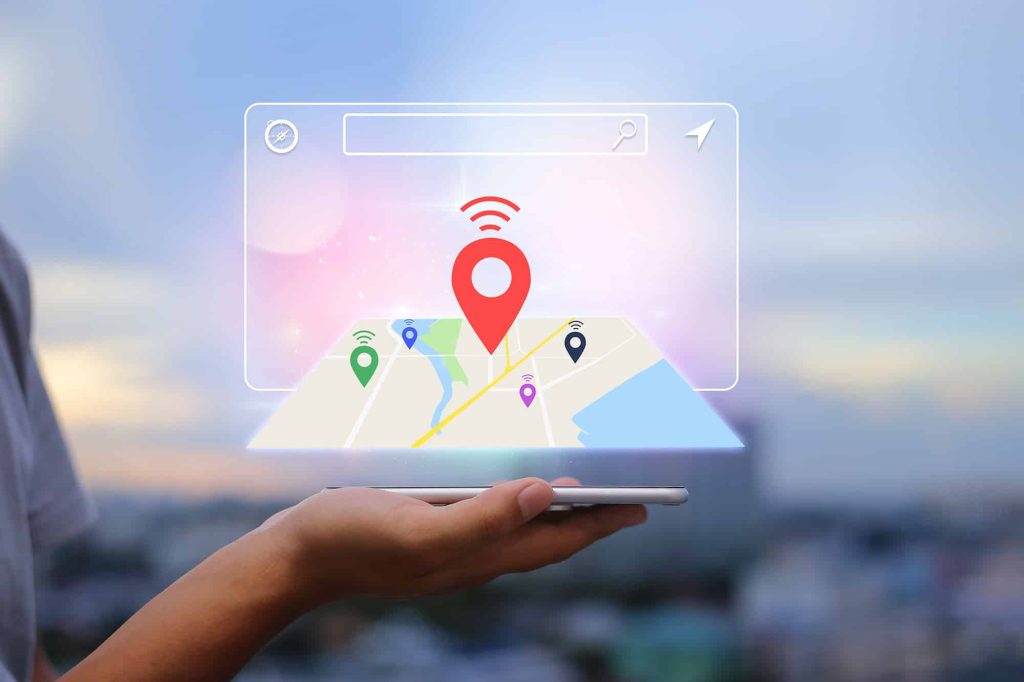Why Local SEO Is So Important

Key Takeaways
- Local SEO is crucial for businesses seeking to draw in customers within targeted locations, as it tailors online presence to local search intent and enhances prominence in location-specific queries.
- By keeping a powerful digital presence, with consistent business information and an active social presence, you’re impacting your local search rankings and customer confidence directly.
- By customizing content, keywords, and approaches for local markets, businesses can reach consumers near them and beat out both international and local competition.
- Great customer reviews and genuine engagement are trust signals as well as key ranking factors that can do wonders for their local SEO.
- Local SEO is an ongoing effort of optimizing your website, local link-building, and managing consistent citations everywhere online to gain the most authority.
- Establishing authentic community ties through involvement, local narratives, and event sponsorship cement brand loyalty and long term local relevance.
What is Local SEO?
Local SEO is a way to have your business found by people looking for products or services in a geographically limited area. It’s about increasing a business’s prominence in local search outcomes, such as when you search for ‘coffee shop near me’. This is especially important for businesses that have a brick-and-mortar storefront or cater to a specific geographic area, as it helps them reach potential customers in their vicinity.
Whereas SEO aims at a wider, often global audience, local SEO focuses on people in a specific location. That is, adjusting website content, keywords and business listings to fit what folks in the local region are searching for. Local keywords, such as “best dentist in buffalo” or “pet store fort ”, assist search engines in aligning with local intent and enhance a business’s position in search results.
Google uses things like relevance, distance and prominence to rank businesses in local search results and on Google Maps, so it’s important to optimize for these. An effective local SEO strategy involves setting up a Google Business Profile, incorporating location-targeted keywords, and generating local citations. The goal is to increase the business’s web presence, increase foot traffic, and earn valuable leads.


Digital Footprint
That includes everything connected to a business online — information, content, and activity is known as a business’ digital footprint. This encompasses sites like websites, business listings, reviews and social profiles. The stronger a business’s digital footprint is, the more it will rank in local search results, which makes people nearby more likely to find and trust it.
Key pieces of a robust digital footprint are a well optimized website, accurate business listings across directories and an active social media presence. Quality photos, service descriptions and contact info beef up the digital presence. Online reviews, especially on Google and Yelp, can have a huge impact on a business’s reputation. Good reviews build confidence and distinguish a business, bad ones repel.
Social media presence, through consistent posting and customer interaction, influences reputation and can impact search rankings. Businesses should make sure all their info is up to date. Incorrect information, such as incorrect hours or old addresses, damages trust and leads to lost opportunities. Periodically auditing and refreshing profiles, business pages and listings keeps that digital footprint strong and trustworthy.
Global vs. Local
Target Audience: Global SEO reaches users worldwide, while local SEO focuses on people in specific cities or regions. Local SEO tightens targeting to users with local intent, so businesses can compete in smaller, more defined markets.
Keyword Strategy: Global SEO uses broad keywords, but local SEO relies on location-based search terms, like “bakery in Paris” or “IT support Singapore.
Competition: Competing globally means facing more rivals, often big brands. Local SEO allows smaller businesses to compete against local competition where they have more influence.
Content Customization: Local SEO tailors content to match local language, culture, and events, making it more relevant for the community.
Local intent changes the way that people search. Someone seeking out ‘plumber’ in their city desires quick, local assistance. Search engines understand this and display local results, so ranking for local intent fits what users want.
Businesses need to localize their content on each respective area, leveraging local landmarks, community events, or even local dialect nuances to establish trust and relevance. By targeting local competitors, not just national or global industry leaders, a business can carve out its niche and increase its local market share.
Local Keyword Research
Local keyword research discovers what people are typing to find what’s near them. Stuff like ‘pizza delivery Madrid’ or ‘hardware store near Main Street’ helps businesses show up in the right searches.
When you put these keywords on your websites, business listings, and social pages, you increase the likelihood of being found by those in your general area. Combining primary services with local identifiers (such as city names or neighborhoods) enhances the business’s visibility to local searchers.


Why Local SEO Matters
Local SEO gets your business in front of customers at the moment they’re looking for something nearby. In our digital-first world, local presence is no longer an add-on; it’s a fundamental growth strategy. Solid local SEO doesn’t just get a business in top search results and the Local Pack, but builds trust and keeps information consistent across the web — crucial since 62% of consumers eschew businesses with incorrect info.
So, below, the table contrasts the fundamental advantages of local SEO.
|
Aspect |
Customer Attraction |
Community Trust |
Visibility |
Competitive Advantage |
|---|---|---|---|---|
|
Main Benefit |
Draws buyers close |
Builds loyalty |
Stays top-of-mind |
Outshines rivals |
|
How It Works |
Local keywords, tailored listings |
Reviews, local events |
Maps, directories, profiles |
Unique offers, optimized content |
|
Impact |
More store visits, more sales |
Loyal, repeat clients |
Consistent online presence |
Higher rankings, more clicks |
1. Attracts Ready Buyers
Local SEO enables businesses to reach individuals who are actively looking for the products or services they offer in their local vicinity. Because local SEO targets consumers who are literally in your area, this is why local SEO is so powerful.
With local keywords, such as “bakery near me” or “best bike shop in Berlin,” spices! These terms help bridge businesses to people who intend to visit or buy.
These strategies — including keeping business hours updated online, adding real photos, and creating posts about daily offers — help reach these buyers quickly. It’s important to audit local search data. This assists identify purchase trends, discover what’s hot, and tailor marketing accordingly.
For instance, if more people look for ‘vegan lunch in Tokyo,’ a cafe can add new options to their menu.
2. Builds Community Trust
Trust builds when you’re a local business that’s involved in the town and responsive to customer desires. By answering reviews – good and bad – and supporting local causes or events, your business demonstrates that it cares about its neighbors.
Reviews from customers are a big deal. In a recent survey, 98% of U.S. Consumers read online reviews at least sometimes, and three-quarters do so frequently. Good reviews create trust and convince potential customers to do business with you.
Getting involved in local happenings—whether it’s sponsoring a city marathon or holding a community gathering—strengthens brand visibility. By sharing stories of customer success or local partnerships you make your business more relatable.
3. Increases Visibility
Local SEO is important and a well-optimized Google Business Profile is crucial. Accurate and current information—address, hours, contact—helps more people to discover and trust your business.
Local citations (mentions on online directories) help expand online reach. Uniformity of information reduces the chance of a potential client being lost because of incorrect information.
Social media has a great impact. Brief updates or event posts can rapidly find a local audience. Tracking these efforts and adjusting based on what works best keeps visibility high.
4. Outranks Competitors
Checking out how peeps do local SEO uncovers untapped opportunities. Perhaps their hours are incorrect, or they don’t answer reviews.
Emphasizing the unique qualities of your business, like sustainability or specials, differentiates it. Local backlinks from trusted sources enhance search rankings even better!
Update content regularly to maintain your edge in the rankings.
5. Drives Physical Traffic
Local SEO gets more people through your doors. Easy tricks like incorporating “near me” keywords and advertising local offers have an impact.
Special events or limited-time sales can give folks a reason to come now. Monitoring how many visits originated through online search assists track what’s effective and where to enhance.

Mastering Your Business Profile
A powerful business profile is the foundation of local SEO and a significant trust engine. It forms first impressions and fuels search engine signals, so accuracy and completeness are a must. The below sections guide you through how to make sure your business profile pops, ranks, and provides value for your customers and search engines.
Core Information
- Business name (as recognized officially)
- Physical address and all locations
- Phone number (local and international format)
- Website URL
- Hours of operation (including holidays)
- Categories and services
- Business description
- Attributes (accessibility, payment options)
- Q&A and FAQs
Every single detail must match everywhere — on maps, directories, social. Even slight inconsistency or discrepancy in phone number or address can make search engines suspicious and therefore lower your ranking. Look for typos or out of date info, as these are little errors that can scare off a customer.
Profiles should be checked at least monthly but weekly is best, especially to update or respond to reviews. Including some relevant keywords in the business description adds context for search engines, but don’t overdo it. Write for humans, not bots, and fill each of your sections–services, Q&A–to assist customers and increase exposure.
Visual Storytelling
Photos and videos are a must. Grainy, poorly lit, or irrelevant photos make the business look amateur and send customers running to the competition. Professional photos of your storefront, staff, products and services establish trust.
For instance, a bakery featuring transparent photos of fresh bread and satisfied patrons seems more reliable than one that uses stock photography or has no images. Let images narrate the brand’s storyline. Reveal the process behind the products, share customer moments, or highlight special events.
User-generated content, like customer photos, fosters authenticity and generates social proof. When posting visuals, always apply descriptive file names and tags—like ‘organic-coffee-shop-berlin.jpg’ vs. ‘IMG_1234.jpg’—which assists local search engines interpret what’s in the image and tie it to relevant local queries.
Customer Interaction
Solicit reviews and feedback on each platform – Google, Facebook, TripAdvisor, etc. Human Ratings & Comments Most of us look at ratings and comments before we make a decision. Businesses that ignore reviews can lose business of up to 15% of their customers, so responding quickly is important.
Thank positive reviewers, respond to issues in negative reviews, and demonstrate that you appreciate feedback. Use direct messaging to respond to questions and troubleshoot issues. Rapid response improves your odds of capturing the business, particularly for mobile users.
Track all feedback and watch for common problems or recommendations. This feedback loop assists in enhancing service, fostering loyalty and indicating to search engines that your profile is active and pertinent.

The Power of Customer Reviews
Customer reviews are now a central component in how search engines and potential customers evaluate local companies. A solid review profile establishes trust, promotes engagement, and pushes a business up in search rankings. When it comes to local SEO, reviews are more than just feedback — they’re a signal of activity and quality and relevance.
The Trust Signal
Trust is what makes the customer take the leap. There’s nothing stronger to demonstrate this trust than genuine reviews and testimonials from actual customers. If you have a high rating — particularly 4.0 stars or more — on your profiles, it puts you ahead in searches for the word “best” or “top.
Praise, sited where prospects will encounter it, informs initial impressions and increases the likelihood that potential customers will click or come. For example, viewing hundreds of 5-star reviews on a Google Business Profile or trusted directory can encourage potential purchasers to contact you.
Happy customers will be your best marketer. Here we have not just word of mouth on a scale, but a marketing tool that can attract new customers. Take, for instance, a company that implements automated SMS review requests post-sale and saw a 40% increase in Google reviews in three months.
Companies that reply to every review—positive or negative—demonstrate that they value customer input. This builds a reputation of transparency and trustworthiness.
The Ranking Factor
Customer reviews play a direct role in how a business ranks in local search. Search engines like Google use review quantity and quality to judge business relevance and authority. A steady stream of recent, positive reviews signals that a business is active, popular, and well-liked.
This can make the difference between appearing on the first page or being hidden from view. For example, a business with hundreds of recent 5-star reviews is more likely to be featured in the Local Pack or even reach position zero.
Volume counts, but sentiment counts too. High average ratings, positive comments, and responded feedback all help improve CTR and visibility—particularly in Google Maps. Businesses should be asking delighted customers to post reviews and observe trends over time.
If ratings drop or bad reviews increase, it’s an indication to tweak local SEO or CX.
The Feedback Loop
Customer feedback doesn’t stop at reviews. It can be a never-ending fountain of information for starting and scaling a business. Do what you can to capture customer sentiment post-purchase—follow-up emails, surveys, etc.—to help capture additional feedback and keep the review pipeline fresh.
Developing a basic mechanism for gathering, examining, and responding to feedback enables a company to identify patterns and potential challenges before they escalate.

Beyond Your Business Profile
Optimizing your business profile is just one piece of the local SEO puzzle. Building a strong presence in local search requires brands to act on website optimization, link-building and citation management. These techniques allow companies to be found by searchers conducting location-based queries—about 50% of all searches currently online.
Website Optimization
A site has to be mobile friendly and load quickly. The vast majority of local searches now occur on mobile, so if a site is slow or difficult to use, users will abandon it—and so will search engines. Google considers mobile-friendliness and speed as ranking signals, in particular local results.
Local keywords should be present in meta titles, headings, and the body copy. Phrases such as “coffee shop in Berlin” or “emergency plumber in Mumbai” assist search engines in gauging a site’s pertinence for local queries. Content needs to be location-based, with topics such as ‘hotels near the mall’ or ‘mechanic near downtown’.
Location-specific landing pages not only assist users — they inform search engines about the areas a business serves. Include a map, address and contact information on every page. Adding schema markup (e.g., LocalBusiness or Organization) helps Google surface business details in rich snippets and Local Packs.
This markup can enhance exposure in voice search and maps results. A simple map on your Contact page tells Google and users precisely where to locate your business. Rich results, such as review stars and FAQs, increase click-through rates by providing searchers with additional details immediately.
Businesses can display some social proof by importing testimonials and reviews from social or comment platforms. A competitive analysis of your competitors’ content will help you figure out how much and what kind of content to supplement each week.
Local Link Building
Your local authority can get a huge boost from trusted local site links. Backlinks from authoritative news sources, from local blogs or neighborhood associations, signal to search engines that a business is relevant in its community.
Teaming up with local groups, event sponsorships or business associations can create additional avenues for partnership link-building. These relationships typically generate high-quality, relevant backlinks.
- Partner with local charities or schools
- Sponsor city events or meetups
- Write guest posts for regional blogs
- Ask suppliers or partners to link back
- Join local business directories
It’s crucial to review backlink profiles regularly. Get rid of junk links and instead prioritize high-quality links from industry and location-specific sites that are well known.
Consistent Citations
Correct business information on all of your listings is key. Inconsistent names, addresses or phone numbers throw users as well as search engines into a tizzy, risking lost visibility.
Consistent audits assist in identifying incorrect or duplicate citations. Addressing these establishes credibility with search engines and users alike.
Citation tools will automate much of this, saving time and reducing mistakes. Updating business listings manually can be a pain and is prone to error.
Local citations are a prime trust indicator. They demonstrate that a business is legitimate and operational in its community.

The Overlooked Human Element
Technical strategies tend to rule local SEO, but it’s the human element that defines the way businesses relate to their communities. Genuine content and real engagement and community presence provide trust and build long term loyalty—where automated tools or data-driven tactics usually come up short.
Personal responses and stories can make the difference in winning a loyal customer or losing one to the competition.
Authentic Content
Content based on a brand’s values and mission can build trust and indicate dependability. When brands share local stories—such as a spotlight on a neighborhood volunteer or quotes from actual customers—they resonate with the community.
This humanizes the business and establishes credibility. Promoting user-generated content is yet another great way to increase credibility. When customers contribute their own reviews, photos or stories, it brings an authentic voice to the brand’s message.
This type of content tells visitors that the company cares about their experience. Blogs and social media posts with these stories provide readers access to real customer experiences. For example, a local bakery posting photos from a community bake-off or sharing a customer’s good news demonstrates genuine engagement and authenticity.
Genuine Engagement
One to one social networking with customers creates relationships that transcend the transaction. Replying to comments — be it compliments, inquiries or grievances — proves a business is attentive and empathetic.
Rapid replies — within a few days, preferably — show you’re on the ball. Being upfront in addressing concerns, apologizing where appropriate, and keeping your cool when being lambasted go a long way towards defusing tension and demonstrating empathy.
Local events – workshops, meetups – offer the opportunity for that irreplaceable in-person connection. Backing local causes or community involvement builds brand loyalty.
Even brief, positive replies to negative comments can defuse situations and stop arguments from boiling over. Volunteering to take hard conversations into private channels keeps things constructive and respectful.
Community Presence
An indomitable local presence stems from engagement in community events, sponsorships, and partnerships with other small businesses. It’s this camaraderie that benefits us all and increases exposure for all.
Getting involved in community service projects builds goodwill and positions you as a trusted neighbor. Distributing local news and updates on social or in-store helps keep customers informed and engaged.
For example, a hardware store could post local weather advisories and advice on safety. These activities demonstrate that the business recognizes and has concern for the community’s needs, which affects perception and loyalty.
Building Long-Term Trust
It’s those personal, human connections –– that leave an impression of your business. Fast, compassionate action and transparent communication establish trust.
Genuine stories and community ties foster long-term relationships. Visible, respectful presence signals commitment to the local area.
The little things—such as a prompt response or a public acknowledgment—count.

Conclusion
Local SEO responds well to clear attention and consistent maintenance. Small tweaks, like new hours or a fast response to a review, can make traffic increase quickly. Trust is built with a solid profile. Great reviews attract people that want to buy immediately. Local sites move quickly, so make sure you keep your information as current as possible. Consider how actual humans interact with your site, not just search spiders. Everything from repair phone numbers to choosing the perfect keywords assists people in discovering your store or service locally. Stay on the ball and monitor your listings frequently. To stay ahead, post your victories and advice to your local community or squad. As always, keep learning and keep helping your local world grow strong in search.
Frequently Asked Questions
Local SEO allows your business to show up in search results to people near you. It optimizes your online visibility so customers can find you around you.
Local SEO reaches nearby buyers who are prepared to purchase. It enhances exposure, fuels foot traffic, and establishes credibility in your local community.
Fill out every profile field, include correct contact information, use pertinent keywords and post quality images. Keep your info current for best results.
Customer reviews enhance your trustworthiness and rank. They drive more consumers your way than your competition.
Try to build local backlinks, get social on social media, and make location-based content. These actions enhance your web presence and influence.
Update your business information when anything changes. Frequent updates maintain a fresh profile that’s both reliable to customers and appealing to search engines.
Yes, service based and online businesses can take advantage of local SEO by targeting geographical regions and integrating location keywords into their content.
Request a Free Demo
(no credit card required)
- Key Takeaways
- What is Local SEO?
- Why Local SEO Matters
- Mastering Your Business Profile
- The Power of Customer Reviews
- Beyond Your Business Profile
- The Overlooked Human Element
- Conclusion
- Frequently Asked Questions
- What is local SEO?
- Why is local SEO important for small businesses?
- How can I optimize my business profile for local SEO?
- Why are customer reviews important for local SEO?
- What else can improve my local SEO besides my business profile?
- How often should I update my business information for local SEO?
- Can local SEO help businesses without a physical storefront?
Key Takeaways
- Local SEO is crucial for businesses seeking to draw in customers within targeted locations, as it tailors online presence to local search intent and enhances prominence in location-specific queries.
- By keeping a powerful digital presence, with consistent business information and an active social presence, you’re impacting your local search rankings and customer confidence directly.
- By customizing content, keywords, and approaches for local markets, businesses can reach consumers near them and beat out both international and local competition.
- Great customer reviews and genuine engagement are trust signals as well as key ranking factors that can do wonders for their local SEO.
- Local SEO is an ongoing effort of optimizing your website, local link-building, and managing consistent citations everywhere online to gain the most authority.
- Establishing authentic community ties through involvement, local narratives, and event sponsorship cement brand loyalty and long term local relevance.
Local SEO is about getting a site to rank better for searches by users in a specific geographical location. It assists boutiques, cafes and freelancers find individuals in their area who desire their goods or assistance.
For small businesses, local SEO drives more foot traffic and calls and can increase revenue. They rank local results based on things like reviews, map listings and keywords with city names.
Clear business details, such as address and hours, establish trust and guide customers to the right location. Businesses with local SEO done well tend to receive more visibility by the appropriate individuals.
Read on for tips and real tools that make your business easy to find for local customers.
What is Local SEO?

Local SEO is a way to have your business found by people looking for products or services in a geographically limited area. It’s about increasing a business’s prominence in local search outcomes, such as when you search for ‘coffee shop near me’. This is especially important for businesses that have a brick-and-mortar storefront or cater to a specific geographic area, as it helps them reach potential customers in their vicinity.
Whereas SEO aims at a wider, often global audience, local SEO focuses on people in a specific location. That is, adjusting website content, keywords and business listings to fit what folks in the local region are searching for. Local keywords, such as “best dentist in buffalo” or “pet store fort ”, assist search engines in aligning with local intent and enhance a business’s position in search results.
Google uses things like relevance, distance and prominence to rank businesses in local search results and on Google Maps, so it’s important to optimize for these. An effective local SEO strategy involves setting up a Google Business Profile, incorporating location-targeted keywords, and generating local citations. The goal is to increase the business’s web presence, increase foot traffic, and earn valuable leads.
Digital Footprint
That includes everything connected to a business online — information, content, and activity is known as a business’ digital footprint. This encompasses sites like websites, business listings, reviews and social profiles. The stronger a business’s digital footprint is, the more it will rank in local search results, which makes people nearby more likely to find and trust it.
Key pieces of a robust digital footprint are a well optimized website, accurate business listings across directories and an active social media presence. Quality photos, service descriptions and contact info beef up the digital presence. Online reviews, especially on Google and Yelp, can have a huge impact on a business’s reputation. Good reviews build confidence and distinguish a business, bad ones repel.
Social media presence, through consistent posting and customer interaction, influences reputation and can impact search rankings. Businesses should make sure all their info is up to date. Incorrect information, such as incorrect hours or old addresses, damages trust and leads to lost opportunities. Periodically auditing and refreshing profiles, business pages and listings keeps that digital footprint strong and trustworthy.
Global vs. Local
-
Target Audience: Global SEO reaches users worldwide, while local SEO focuses on people in specific cities or regions. Local SEO tightens targeting to users with local intent, so businesses can compete in smaller, more defined markets.
-
Keyword Strategy: Global SEO uses broad keywords, but local SEO relies on location-based search terms, like “bakery in Paris” or “IT support Singapore.
-
Competition: Competing globally means facing more rivals, often big brands. Local SEO allows smaller businesses to compete against local competition where they have more influence.
-
Content Customization: Local SEO tailors content to match local language, culture, and events, making it more relevant for the community.
Local intent changes the way that people search. Someone seeking out ‘plumber’ in their city desires quick, local assistance. Search engines understand this and display local results, so ranking for local intent fits what users want.
Businesses need to localize their content on each respective area, leveraging local landmarks, community events, or even local dialect nuances to establish trust and relevance. By targeting local competitors, not just national or global industry leaders, a business can carve out its niche and increase its local market share.
Local Keyword Research
Local keyword research discovers what people are typing to find what’s near them. Stuff like ‘pizza delivery Madrid’ or ‘hardware store near Main Street’ helps businesses show up in the right searches.
When you put these keywords on your websites, business listings, and social pages, you increase the likelihood of being found by those in your general area. Combining primary services with local identifiers (such as city names or neighborhoods) enhances the business’s visibility to local searchers.
Why Local SEO Matters

Local SEO gets your business in front of customers at the moment they’re looking for something nearby. In our digital-first world, local presence is no longer an add-on; it’s a fundamental growth strategy. Solid local SEO doesn’t just get a business in top search results and the Local Pack, but builds trust and keeps information consistent across the web — crucial since 62% of consumers eschew businesses with incorrect info.
So, below, the table contrasts the fundamental advantages of local SEO.
|
Aspect |
Customer Attraction |
Community Trust |
Visibility |
Competitive Advantage |
|---|---|---|---|---|
|
Main Benefit |
Draws buyers close |
Builds loyalty |
Stays top-of-mind |
Outshines rivals |
|
How It Works |
Local keywords, tailored listings |
Reviews, local events |
Maps, directories, profiles |
Unique offers, optimized content |
|
Impact |
More store visits, more sales |
Loyal, repeat clients |
Consistent online presence |
Higher rankings, more clicks |
1. Attracts Ready Buyers
Local SEO enables businesses to reach individuals who are actively looking for the products or services they offer in their local vicinity. Because local SEO targets consumers who are literally in your area, this is why local SEO is so powerful.
With local keywords, such as “bakery near me” or “best bike shop in Berlin,” spices! These terms help bridge businesses to people who intend to visit or buy.
These strategies — including keeping business hours updated online, adding real photos, and creating posts about daily offers — help reach these buyers quickly. It’s important to audit local search data. This assists identify purchase trends, discover what’s hot, and tailor marketing accordingly.
For instance, if more people look for ‘vegan lunch in Tokyo,’ a cafe can add new options to their menu.
2. Builds Community Trust
Trust builds when you’re a local business that’s involved in the town and responsive to customer desires. By answering reviews – good and bad – and supporting local causes or events, your business demonstrates that it cares about its neighbors.
Reviews from customers are a big deal. In a recent survey, 98% of U.S. Consumers read online reviews at least sometimes, and three-quarters do so frequently. Good reviews create trust and convince potential customers to do business with you.
Getting involved in local happenings—whether it’s sponsoring a city marathon or holding a community gathering—strengthens brand visibility. By sharing stories of customer success or local partnerships you make your business more relatable.
3. Increases Visibility
Local SEO is important and a well-optimized Google Business Profile is crucial. Accurate and current information—address, hours, contact—helps more people to discover and trust your business.
Local citations (mentions on online directories) help expand online reach. Uniformity of information reduces the chance of a potential client being lost because of incorrect information.
Social media has a great impact. Brief updates or event posts can rapidly find a local audience. Tracking these efforts and adjusting based on what works best keeps visibility high.
4. Outranks Competitors
Checking out how peeps do local SEO uncovers untapped opportunities. Perhaps their hours are incorrect, or they don’t answer reviews.
Emphasizing the unique qualities of your business, like sustainability or specials, differentiates it. Local backlinks from trusted sources enhance search rankings even better!
Update content regularly to maintain your edge in the rankings.
5. Drives Physical Traffic
Local SEO gets more people through your doors. Easy tricks like incorporating “near me” keywords and advertising local offers have an impact.
Special events or limited-time sales can give folks a reason to come now. Monitoring how many visits originated through online search assists track what’s effective and where to enhance.
Mastering Your Business Profile

A powerful business profile is the foundation of local SEO and a significant trust engine. It forms first impressions and fuels search engine signals, so accuracy and completeness are a must. The below sections guide you through how to make sure your business profile pops, ranks, and provides value for your customers and search engines.
Core Information
- Business name (as recognized officially)
- Physical address and all locations
- Phone number (local and international format)
- Website URL
- Hours of operation (including holidays)
- Categories and services
- Business description
- Attributes (accessibility, payment options)
- Q&A and FAQs
Every single detail must match everywhere — on maps, directories, social. Even slight inconsistency or discrepancy in phone number or address can make search engines suspicious and therefore lower your ranking. Look for typos or out of date info, as these are little errors that can scare off a customer.
Profiles should be checked at least monthly but weekly is best, especially to update or respond to reviews. Including some relevant keywords in the business description adds context for search engines, but don’t overdo it. Write for humans, not bots, and fill each of your sections–services, Q&A–to assist customers and increase exposure.
Visual Storytelling
Photos and videos are a must. Grainy, poorly lit, or irrelevant photos make the business look amateur and send customers running to the competition. Professional photos of your storefront, staff, products and services establish trust.
For instance, a bakery featuring transparent photos of fresh bread and satisfied patrons seems more reliable than one that uses stock photography or has no images. Let images narrate the brand’s storyline. Reveal the process behind the products, share customer moments, or highlight special events.
User-generated content, like customer photos, fosters authenticity and generates social proof. When posting visuals, always apply descriptive file names and tags—like ‘organic-coffee-shop-berlin.jpg’ vs. ‘IMG_1234.jpg’—which assists local search engines interpret what’s in the image and tie it to relevant local queries.
Customer Interaction
Solicit reviews and feedback on each platform – Google, Facebook, TripAdvisor, etc. Human Ratings & Comments Most of us look at ratings and comments before we make a decision. Businesses that ignore reviews can lose business of up to 15% of their customers, so responding quickly is important.
Thank positive reviewers, respond to issues in negative reviews, and demonstrate that you appreciate feedback. Use direct messaging to respond to questions and troubleshoot issues. Rapid response improves your odds of capturing the business, particularly for mobile users.
Track all feedback and watch for common problems or recommendations. This feedback loop assists in enhancing service, fostering loyalty and indicating to search engines that your profile is active and pertinent.
The Power of Customer Reviews

Customer reviews are now a central component in how search engines and potential customers evaluate local companies. A solid review profile establishes trust, promotes engagement, and pushes a business up in search rankings. When it comes to local SEO, reviews are more than just feedback — they’re a signal of activity and quality and relevance.
The Trust Signal
Trust is what makes the customer take the leap. There’s nothing stronger to demonstrate this trust than genuine reviews and testimonials from actual customers. If you have a high rating — particularly 4.0 stars or more — on your profiles, it puts you ahead in searches for the word “best” or “top.
Praise, sited where prospects will encounter it, informs initial impressions and increases the likelihood that potential customers will click or come. For example, viewing hundreds of 5-star reviews on a Google Business Profile or trusted directory can encourage potential purchasers to contact you.
Happy customers will be your best marketer. Here we have not just word of mouth on a scale, but a marketing tool that can attract new customers. Take, for instance, a company that implements automated SMS review requests post-sale and saw a 40% increase in Google reviews in three months.
Companies that reply to every review—positive or negative—demonstrate that they value customer input. This builds a reputation of transparency and trustworthiness.
The Ranking Factor
Customer reviews play a direct role in how a business ranks in local search. Search engines like Google use review quantity and quality to judge business relevance and authority. A steady stream of recent, positive reviews signals that a business is active, popular, and well-liked.
This can make the difference between appearing on the first page or being hidden from view. For example, a business with hundreds of recent 5-star reviews is more likely to be featured in the Local Pack or even reach position zero.
Volume counts, but sentiment counts too. High average ratings, positive comments, and responded feedback all help improve CTR and visibility—particularly in Google Maps. Businesses should be asking delighted customers to post reviews and observe trends over time.
If ratings drop or bad reviews increase, it’s an indication to tweak local SEO or CX.
The Feedback Loop
Customer feedback doesn’t stop at reviews. It can be a never-ending fountain of information for starting and scaling a business. Do what you can to capture customer sentiment post-purchase—follow-up emails, surveys, etc.—to help capture additional feedback and keep the review pipeline fresh.
Developing a basic mechanism for gathering, examining, and responding to feedback enables a company to identify patterns and potential challenges before they escalate.
Beyond Your Business Profile
Optimizing your business profile is just one piece of the local SEO puzzle. Building a strong presence in local search requires brands to act on website optimization, link-building and citation management. These techniques allow companies to be found by searchers conducting location-based queries—about 50% of all searches currently online.
Website Optimization
A site has to be mobile friendly and load quickly. The vast majority of local searches now occur on mobile, so if a site is slow or difficult to use, users will abandon it—and so will search engines. Google considers mobile-friendliness and speed as ranking signals, in particular local results.
Local keywords should be present in meta titles, headings, and the body copy. Phrases such as “coffee shop in Berlin” or “emergency plumber in Mumbai” assist search engines in gauging a site’s pertinence for local queries. Content needs to be location-based, with topics such as ‘hotels near the mall’ or ‘mechanic near downtown’.
Location-specific landing pages not only assist users — they inform search engines about the areas a business serves. Include a map, address and contact information on every page. Adding schema markup (e.g., LocalBusiness or Organization) helps Google surface business details in rich snippets and Local Packs.
This markup can enhance exposure in voice search and maps results. A simple map on your Contact page tells Google and users precisely where to locate your business. Rich results, such as review stars and FAQs, increase click-through rates by providing searchers with additional details immediately.
Businesses can display some social proof by importing testimonials and reviews from social or comment platforms. A competitive analysis of your competitors’ content will help you figure out how much and what kind of content to supplement each week.
Local Link Building
Your local authority can get a huge boost from trusted local site links. Backlinks from authoritative news sources, from local blogs or neighborhood associations, signal to search engines that a business is relevant in its community.
Teaming up with local groups, event sponsorships or business associations can create additional avenues for partnership link-building. These relationships typically generate high-quality, relevant backlinks.
- Partner with local charities or schools
- Sponsor city events or meetups
- Write guest posts for regional blogs
- Ask suppliers or partners to link back
- Join local business directories
It’s crucial to review backlink profiles regularly. Get rid of junk links and instead prioritize high-quality links from industry and location-specific sites that are well known.
Consistent Citations
Correct business information on all of your listings is key. Inconsistent names, addresses or phone numbers throw users as well as search engines into a tizzy, risking lost visibility.
Consistent audits assist in identifying incorrect or duplicate citations. Addressing these establishes credibility with search engines and users alike.
Citation tools will automate much of this, saving time and reducing mistakes. Updating business listings manually can be a pain and is prone to error.
Local citations are a prime trust indicator. They demonstrate that a business is legitimate and operational in its community.
The Overlooked Human Element

Technical strategies tend to rule local SEO, but it’s the human element that defines the way businesses relate to their communities. Genuine content and real engagement and community presence provide trust and build long term loyalty—where automated tools or data-driven tactics usually come up short.
Personal responses and stories can make the difference in winning a loyal customer or losing one to the competition.
Authentic Content
Content based on a brand’s values and mission can build trust and indicate dependability. When brands share local stories—such as a spotlight on a neighborhood volunteer or quotes from actual customers—they resonate with the community.
This humanizes the business and establishes credibility. Promoting user-generated content is yet another great way to increase credibility. When customers contribute their own reviews, photos or stories, it brings an authentic voice to the brand’s message.
This type of content tells visitors that the company cares about their experience. Blogs and social media posts with these stories provide readers access to real customer experiences. For example, a local bakery posting photos from a community bake-off or sharing a customer’s good news demonstrates genuine engagement and authenticity.
Genuine Engagement
One to one social networking with customers creates relationships that transcend the transaction. Replying to comments — be it compliments, inquiries or grievances — proves a business is attentive and empathetic.
Rapid replies — within a few days, preferably — show you’re on the ball. Being upfront in addressing concerns, apologizing where appropriate, and keeping your cool when being lambasted go a long way towards defusing tension and demonstrating empathy.
Local events – workshops, meetups – offer the opportunity for that irreplaceable in-person connection. Backing local causes or community involvement builds brand loyalty.
Even brief, positive replies to negative comments can defuse situations and stop arguments from boiling over. Volunteering to take hard conversations into private channels keeps things constructive and respectful.
Community Presence
An indomitable local presence stems from engagement in community events, sponsorships, and partnerships with other small businesses. It’s this camaraderie that benefits us all and increases exposure for all.
Getting involved in community service projects builds goodwill and positions you as a trusted neighbor. Distributing local news and updates on social or in-store helps keep customers informed and engaged.
For example, a hardware store could post local weather advisories and advice on safety. These activities demonstrate that the business recognizes and has concern for the community’s needs, which affects perception and loyalty.
Building Long-Term Trust
It’s those personal, human connections –– that leave an impression of your business. Fast, compassionate action and transparent communication establish trust.
Genuine stories and community ties foster long-term relationships. Visible, respectful presence signals commitment to the local area.
The little things—such as a prompt response or a public acknowledgment—count.
Conclusion
Local SEO responds well to clear attention and consistent maintenance. Small tweaks, like new hours or a fast response to a review, can make traffic increase quickly. Trust is built with a solid profile. Great reviews attract people that want to buy immediately. Local sites move quickly, so make sure you keep your information as current as possible. Consider how actual humans interact with your site, not just search spiders. Everything from repair phone numbers to choosing the perfect keywords assists people in discovering your store or service locally. Stay on the ball and monitor your listings frequently. To stay ahead, post your victories and advice to your local community or squad. As always, keep learning and keep helping your local world grow strong in search.
Frequently Asked Questions
What is local SEO?
Local SEO allows your business to show up in search results to people near you. It optimizes your online visibility so customers can find you around you.
Why is local SEO important for small businesses?
Local SEO reaches nearby buyers who are prepared to purchase. It enhances exposure, fuels foot traffic, and establishes credibility in your local community.
How can I optimize my business profile for local SEO?
Fill out every profile field, include correct contact information, use pertinent keywords and post quality images. Keep your info current for best results.
Why are customer reviews important for local SEO?
Customer reviews enhance your trustworthiness and rank. They drive more consumers your way than your competition.
What else can improve my local SEO besides my business profile?
Try to build local backlinks, get social on social media, and make location-based content. These actions enhance your web presence and influence.
How often should I update my business information for local SEO?
Update your business information when anything changes. Frequent updates maintain a fresh profile that’s both reliable to customers and appealing to search engines.
Can local SEO help businesses without a physical storefront?
Yes, service based and online businesses can take advantage of local SEO by targeting geographical regions and integrating location keywords into their content.

 Demo
Demo